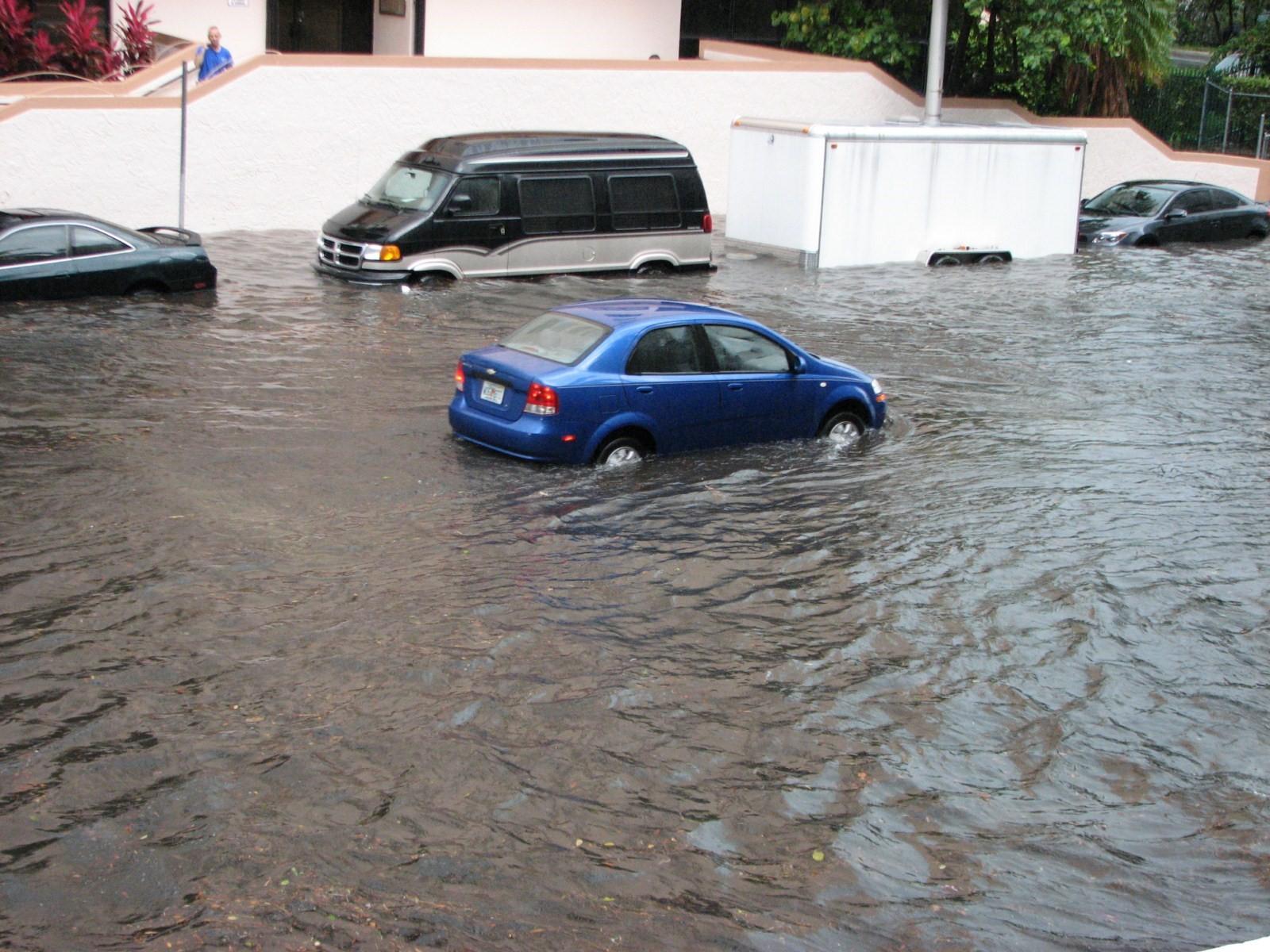The Contributions of Rainfall Systems to Mid-Atlantic Summer Extreme Precipitation
Researchers quantified the contributions of different types of convective storms to summer extreme precipitation in the Mid-Atlantic region

Extreme precipitation can cause flooding. Understanding the contributions of different types of rainfall systems to extreme precipitation is beneficial for studies investigating how floods will respond to future changes.
The Science
Substantial efforts have been made to investigate the relationship between extreme precipitation and large-scale meteorological patterns as well as their responses to global warming. However, in regions such as the Mid-Atlantic, extreme precipitation may be caused by different types of convective storms supported by different large-scale environments. Scientists developed and used a long-term, high-resolution (4-km, hourly) observational dataset to determine the characteristics of mean and extreme precipitation associated with four types of storms: mesoscale convective system (MCS), isolated deep convection (IDC), tropical cyclone (TC), and non-convective (NC) systems. They showed that MCS, IDC, and NC are all essential contributors to the Mid-Atlantic summer mean and extreme precipitation.
The Impact
This analysis of the climatological characteristics of summer mean and extreme precipitation provides a foundation for future studies that seek to understand how summer precipitation in the Mid-Atlantic region will respond to human influences, such as urbanization. Quantifying the contributions of the different storm types to precipitation also provides a novel and valuable benchmark for improving precipitation modeling in the coastal region. With MCS, IDC, and NC making important contributions to extreme precipitation, this study demonstrates the need for understanding the specific relationships between each storm type and large-scale meteorological patterns.
Summary
Researchers used computational resources from the National Energy Research Scientific Computing Center to combine a newly developed high-resolution (4-km, hourly) MCS-IDC dataset, containing the tracks and characteristics of MCS and IDC events, and the International Best Track Archive for Climate Stewardship (IBTrACS) tropical cyclone dataset. They classified four types of precipitation (MCS, IDC, TC, and NC), investigated their respective contributions to summer mean and extreme precipitation, and explored the local vs. remote influence of MCS and IDC over the Mid-Atlantic region for 2004–2017.
The researchers found that convective precipitation accounts for 55% of Mid-Atlantic summer mean precipitation. However, the fraction increases to about 75% for extreme precipitation due to the much lower precipitation intensities for non-convective precipitation than convective precipitation (MCS, IDC, and TC). The four types of precipitation show significantly different spatial variations. MCSs dominate summertime extreme precipitation in the central Mid-Atlantic coastal areas. 80% of the MCSs that produce precipitation in the Mid-Atlantic originate from regions far upstream, with about half initiated in the Great Plains and Midwest. In addition, the Appalachian Mountains and sea breezes from the Atlantic Ocean strongly influence the precipitation distributions over the coastal region. This study motivates the importance of understanding upstream storms and their large-scale environments to understand the variability and long-term changes of extreme precipitation in the Mid-Atlantic region.
PNNL Contact
Ruby Leung, Pacific Northwest National Laboratory, Ruby.Leung@pnnl.gov
Funding
This research was supported by the U.S. Department of Energy Office of Science Biological and Environmental Research as part of the Regional and Global Modeling and Analysis (RGMA) program area through the collaborative, multi-program Integrated Coastal Modeling project. The research was also partly supported by the Water Cycle and Climate Extremes Modeling Scientific Focus Area funded by RGMA. The research used computational resources from the National Energy Research Scientific Computing Center, a DOE user facility supported by the Office of Science under Contract DE-AC02-05CH11231.
Published: September 10, 2021
J. Li, Y. Qian, L. R. Leung, and Z. Feng. “Summer mean and extreme precipitation over the Mid-Atlantic region: climatological characteristics and contributions from different precipitation types.” J. Geophys. Res.-Atmos., 126, e2021JD035045, (2021). [DOI: 10.1029/2021JD035045].